The novelist with Christian concerns will find in modern life distortions which are repugnant to him, and his problem will be to make these appear as distortions to an audience which is used to seeing them as natural; and he may well be forced to take ever more violent means to get his vision across to this hostile audience. When you can assume that your audience holds the same beliefs you do, you can relax a little and use more normal means of talking to it; when you have to assume that it does not, then you have to make your vision apparent by shock; to the hard of hearing you shout, and for the almost-blind you draw large and startling figures.
–Flannery O’Connor
When all else fails, shout?
Thomas Clark Shearer, 1927-2014
My father died of pneumonia about 2:20 this afternoon, Mountain Standard Time. He was 87, and as I have mentioned previously, in an advanced state of dementia; he had been virtually speechless for over a year.
I hope I may have more to say later, but I do not think I shall be fit to write anything for the next few days.
A reminiscence of my father
The Cremation of Sam McGee
There are strange things done in the midnight sun
By the men who moil for gold;
The Arctic trails have their secret tales
That would make your blood run cold;
The Northern Lights have seen queer sights,
But the queerest they ever did see
Was that night on the marge of Lake Lebarge
I cremated Sam McGee.
A brief bulletin
I have been ill with flu and depression, and have got no writing of any value done lately. The most I have been able to do is amuse myself by pottering about with background stuff of at best questionable utility.
In the midst of this, I was woken last night by a phone call: My father, who is 87 and in an advanced state of dementia, is now in hospital with pneumonia. As often happens in such cases, he cannot swallow liquids without aspirating them, so can only be fed or medicated intravenously, and he has water in his lungs. He is not expected to survive.
I would be most grateful if any of my readers were to pray for him, and for my family generally.
Fashion and moral influence
It is said by some, that men will think and act for themselves; that none will disuse spirits or anything else, merely because his neighbors do; and that moral influence is not that powerful engine contended for. Let us examine this. Let me ask the man who would maintain this position most stiffly, what compensation he will accept to go to church some Sunday and sit during the sermon with his wife’s bonnet upon his head? Not a trifle, I’ll venture. And why not? There would be nothing irreligious in it: nothing immoral, nothing uncomfortable. Then why not? It is not because there would be something egregiously unfashionable in it? Then it is the influence of fashion; and what is the influence of fashion, but the influence that other people’s actions have?
—Abraham Lincoln: Address delivered before the Springfield Washington Temperance Society, 1842. Collected Works, vol. I, p. 277.
The ‘Augustinian cogito’
[E]very mind knows and is certain concerning itself. For men have doubted whether the power to live, to remember, to understand, to will, to think, to know, and to judge is due to air, to fire, or to the brain, or to the blood, or to atoms… or whether the combining or the orderly arrangement of the flesh is capable of producing these effects; one has tried to maintain this opinion, another that opinion.
On the other hand who would doubt that he lives, remembers, understands, wills, thinks, knows, and judges? For even if he doubts, he lives; if he doubts, he remembers why he doubts; if he doubts, he understands that he doubts; if he doubts, he wishes to be certain; if he doubts, he thinks; if he doubts, he knows that he does not know; if he doubts, he judges that he ought not to consent rashly. Whoever then doubts about anything else ought never to doubt about all of these; for if they were not, he would be unable to doubt about anything at all.
—St. Augustine, On the Trinity, book 10, chapter 10
Edward Feser has an interesting discussion of this matter over at his blog, for those philosophically inclined.
Magic vs. sacraments
Magic attempts to use preternatural forces for natural ends. Sacraments use natural matter for supernatural ends.
—Fr. Dan Pattee (as paraphrased by Brian Niemeier)
Fr. Pattee is associate professor of theology at Franciscan University of Steubenville.
Brian Niemeier is a Loyal Reader and a good fellow with a sound head on his shoulders. He demonstrates this last point admirably in his recent blog post, ‘Squirrel Chasing’.
How to Shut Down Tolkien
A talk given by Brandon Rhodes at PyGotham 2014, and in my humble but infallible opinion, a very interesting one. Rhodes has much to say about how to encourage the creative faculties and how to bully them into silence.
There are one or two minor factual errors. Lewis was not the first person to whom Tolkien showed the Silmarillion matter: he had given some of it to R. W. Reynolds (for whom he wrote the ‘Sketch of the Mythology’ about 1926), and his earliest audience had been his wife, Edith. But these are unimportant in this context. Lewis was definitely the critic and catalyst who awoke Tolkien’s full powers and spurred him on through his most productive period. How he did so, and how he almost failed, makes an illuminating story.
Hat tip to Nancy Lebovitz for sending me the link.
What happens next
Some months ago, I read a rather sad and disturbing piece about a professor of Creative Writing at an English university (not Oxbridge). This fellow opined that his discipline was basically useless, because while prose style could be taught and learnt, he did not believe that anybody could teach the idea of story.
I think it was Ursula K. LeGuin who said something rather similar, if less fatalistic, on the other side of the pond. She said that in working with young would-be writers, she found that while many of them had an excellent grasp of style and mechanics, not one in a hundred had a feel for story – what made a good one and how to construct it.
I find this very odd. Perhaps these modern and sophisticated people have not had the advantage of being mired in ignorance and tradition as children, as I had, or (a much better example) G. K. Chesterton. We were fairly steeped in stories when we were small, and nakedly unsophisticated stories, too. There are more lessons for fiction writers in ‘Jack and the Beanstalk’ or ‘The Three Billy Goats Gruff’ than on many a university campus. Since it seems unfair that wealth and education should be so unfairly disadvantaged, in comparison of poverty and stupidity, I shall offer to share my widow’s mite with the world.
A story (said I, in my most foolishly sententious tones) is a machine for communicating What Happens Next. A successful story is one which makes the reader, listener, or viewer care What Happens Next, and stick around with bated breath awaiting the outcome.
To demonstrate these propositions, I enlist the help of that celebrated storyteller, Kermit the Frog:
Here we see all the crucial elements of a good story in their most basic and unadorned form.
1. We have a character (Kermit) who wants to accomplish something, and is taking action to do so.
2. We have an expectation of how the thing is to be accomplished (the What Happens Next machine).
3. Things go wrong. What actually happens next is not what was supposed to happen next. Our character becomes unhappy and frustrated, but perseveres. We like and admire him for keeping on in the face of adversity. More to the point, if he gave up, he would never get to see What Happens Next, and neither would we.
It is important, at this stage, that what actually happens next should bear some kind of relevance to what we expected to happen. If it doesn’t, we have lost the thread of the story. To take an even simpler example than Kermit’s, we expect that two and two will make four; but even this can go wrong. It can go wrong in a way that naturally lends itself to a story: ‘Two plates and two plates only make three plates, because it was too many to carry and I broke one.’ It is the wrong answer, or an unexpected answer, but we can see how it is related to the expected one. Or it can go wrong in a way that is purely arbitrary, which is the death of story: ‘Two plates and two plates make – oh, look! Squirrel!’
Eschew the latter.
4. Eventually, we have a satisfying conclusion. Sometimes this will be what is called a Happy Ending. In this particular case, it is a tragedy with an O. Henry twist, as Kermit winds up losing his radio to the very machine he created to switch it on.
But there is no doubt that the story is concluded. The ‘slingshot ending’ beloved of modern littéraires, which leaves the outcome firmly in question, is a monkey trick, a piece of over-elaborate hackwork. It worked once – in ‘The Lady or the Tiger?’ – when the whole point of the story was to startle the reader with an intriguing novelty. It was never likely to work again, except on persons who had never seen the trick done the first time; for novelty was the only thing it had to offer. Sometimes the trick will work as a joke ending, if the setup has been sufficiently complicated to keep the audience from expecting it. The film Lock, Stock and Two Smoking Barrels had such an ending; but the ending was also a sight gag, and perfectly fitted the style and theme. It would have been disappointing to see the lead characters succeed, for they were bumbling fools who had never done anything right so far; it would have been heartbreaking to see them fail, for they were likeable bumbling fools. Better to go out with a laugh, by leaving them literally hanging in mid-air.
The art of storytelling, say I, can be divided into two parts. One is figuring out what actually happens next, and how it is in conflict with what was supposed or expected to happen. This is largely a matter of plotting; though it can be done in picaresques, and vignettes, and other plotless works – which is why story and plot are not the same thing. The second part is causing the audience to take a lively and abiding interest in finding out what happens next, so they will not put the book down, change the channel, or bury a battle-axe in the skald’s unworthy skull. That is a matter of Art, and too long for Kermit to go into.
Breaking blog silence
Maypo, one of the 3.6 Loyal Readers, expresses concern, for which I am thankful to him and to God:
I hope that your recent blog silence is due to a focus on writing that pays the bills rather than (my fear) another setback in health. I pray for the former.
Unfortunately, I have been under the weather in a rather literal way. We have had about a week of temperatures below zero Fahrenheit, and the decrepit building I live in has wonky heating and no insulation to speak of. I had a cold when the weather turned bad, and have been fighting in these circumstances to keep it from becoming bronchitis.
On top of that, the good and gifted Wendy S. Delmater, my principal alpha reader, has had bronchitis at the exact same time, and has been entirely unable to help me get my scattered ducks into the same yard, never mind in a row. So the first half of November, for me, has been about as unproductive as it possibly could have been. I am very sorry.
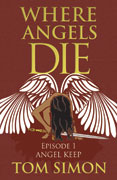

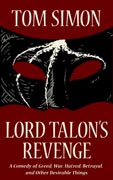

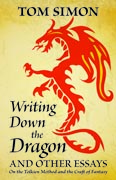
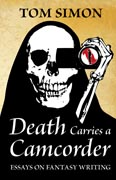
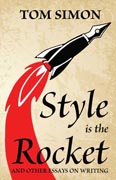
Recent Comments